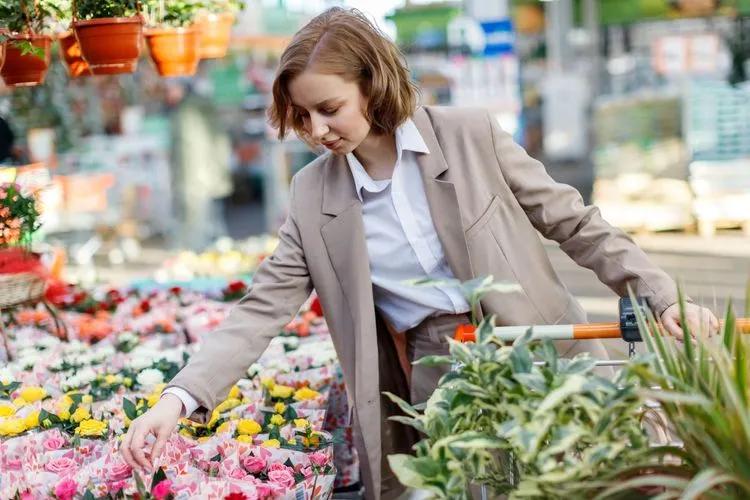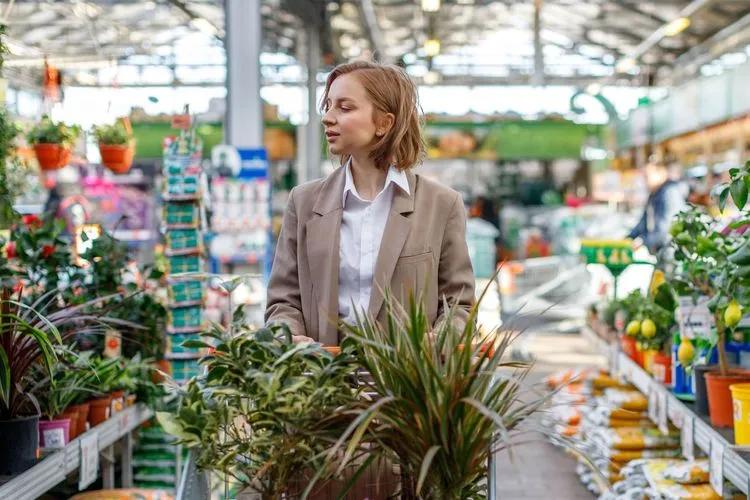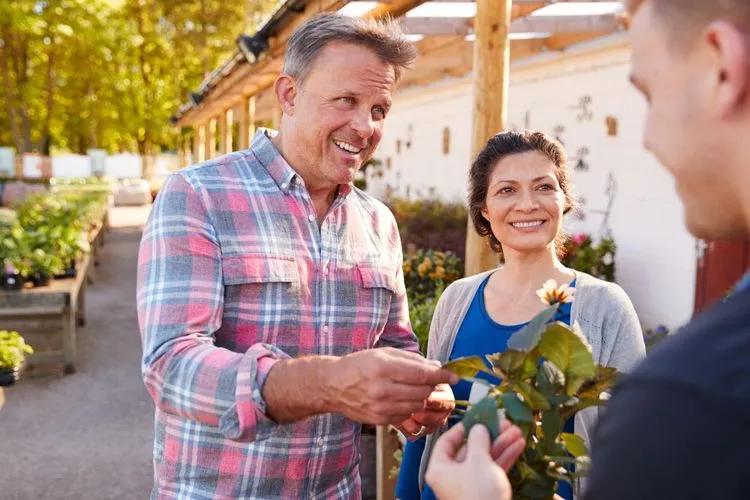 Just choosing a species you want to have on your windowsill is not enough. Buying a houseplant, you should carefully inspect the plant so as not to be mistaken. How to choose a healthy houseplant for your home so that you will enjoy it for a long time?
Just choosing a species you want to have on your windowsill is not enough. Buying a houseplant, you should carefully inspect the plant so as not to be mistaken. How to choose a healthy houseplant for your home so that you will enjoy it for a long time?
Usually, most plants in stores look very pretty: they are all in bloom, with silky and bright foliage. But after several weeks, the appearance of the plant might lose its attractiveness. So how not get mistaken? Small hint: the best choice is not the prettiest plant with the most flowers. Read our checklist of pieces of advice to remember before choosing a plant in the store:
1. Where to buy?
Many of us trust large, proven stores with lots of indoor plants. At first glance, they seem like ideal growing conditions: lamps with artificial ultraviolet light, sufficient air humidity, regular waterings. However, this is not enough for the plant to grow and develop well. That is why flowers from large stores often cannot stand the drastic change of conditions when brought home and die soon.
We recommend paying attention to small flower shops or online stores. Prepare yourself for the fact that the price of their product will be much higher, but the chances of getting a healthy flower will also rise. Also, these options often have more rare species.
2. Where is the plant located?
Do not buy a plant located in an aisle or close to a window. In these places, the plant could get mechanically injured, sunburn, or get too cold. Even if the flower looks healthy on the outside, the consequences can come as an unpleasant surprise after you bring it home.
3. Explore the roots
 Always pick up the plant pot and examine it. Do not select plants with rotten roots. If the roots stick out firmly from the drainage holes, then the flower in the pot is cramped and urgently needs to be repotted. Rootbound plants have already experienced too much stress, which makes them vulnerable. As a result, you never know whether the plant will be able to recover in full, and it’s almost impossible to tell how badly a plant root system is damaged. However, it does not apply to orchids, monsteras, and many aroids, since in addition to the underground root system, they also have an air one, so they have some aerial roots.
Always pick up the plant pot and examine it. Do not select plants with rotten roots. If the roots stick out firmly from the drainage holes, then the flower in the pot is cramped and urgently needs to be repotted. Rootbound plants have already experienced too much stress, which makes them vulnerable. As a result, you never know whether the plant will be able to recover in full, and it’s almost impossible to tell how badly a plant root system is damaged. However, it does not apply to orchids, monsteras, and many aroids, since in addition to the underground root system, they also have an air one, so they have some aerial roots.
4. Look at the leaves
The foliage should be green, dense, and should not curl. Dry tips, various spots, little holes - all these signs indicate plant diseases or pests. The bare stems without leaves also prove that the plant has suffered. Examine the stems for pests, and don't forget to look at the leaves from below. Very soft leaves and stems can recognize overfed plants.
5. Pay attention to the soil in the pot
Is it too dry or too damp? The soil should be slightly wet. If it is too dry, the plant might not get enough moisture. Space between the sides of the pot and the soil itself also indicates that the plant is not watered properly. Damp soil is even worse: it can be a sign of overwatering. In this case, the roots might be rotting.
Look for white or green patches on the soil - avoid buying such specimens. There should be no mosses or lichens on the surface of the substrate. Unless, of course, you are buying a bonsai.
6. Check the presence of buds
 Of course, a lush plant strewn with flowers immediately catches the eye. But if you want to admire the beauty for a longer time, we advise you to choose a specimen with more buds than blossoming flowers.
Of course, a lush plant strewn with flowers immediately catches the eye. But if you want to admire the beauty for a longer time, we advise you to choose a specimen with more buds than blossoming flowers.
7. Try not to buy a mature plant
It will be much easier for young plants to endure stress, and acclimatization will be faster. A grown-up flower takes a very long and painful time to adapt to new conditions. Also, younger plants grow faster.
8. Coming home
 So you've bought a new green pet. At this stage, it is vital to provide safe transportation. What to do if it is cold outside? First, ask the consultant to pack the flower carefully. Secondly, do not take the plant out on the day of watering as the roots can freeze in no time if it is cold.
When at home, do not rush to unpack the purchase - let it warm up. For this, wait for a couple of hours. Finally, do not rush to replant the newcomer. While the plant must be repotted in bigger pot with proper soil, give your pet some time to adapt to the new environment. Wait for 1-2 weeks to minimize the stress.
So you've bought a new green pet. At this stage, it is vital to provide safe transportation. What to do if it is cold outside? First, ask the consultant to pack the flower carefully. Secondly, do not take the plant out on the day of watering as the roots can freeze in no time if it is cold.
When at home, do not rush to unpack the purchase - let it warm up. For this, wait for a couple of hours. Finally, do not rush to replant the newcomer. While the plant must be repotted in bigger pot with proper soil, give your pet some time to adapt to the new environment. Wait for 1-2 weeks to minimize the stress.
Final thoughts
As you never can tell whether the plant received proper care, its appearance remains the best indicator of quality. Do not neglect even the tiniest brown spots or dry leaves. Hope our recommendations will aid in selecting the healthiest and prettiest green newbies for your home.
